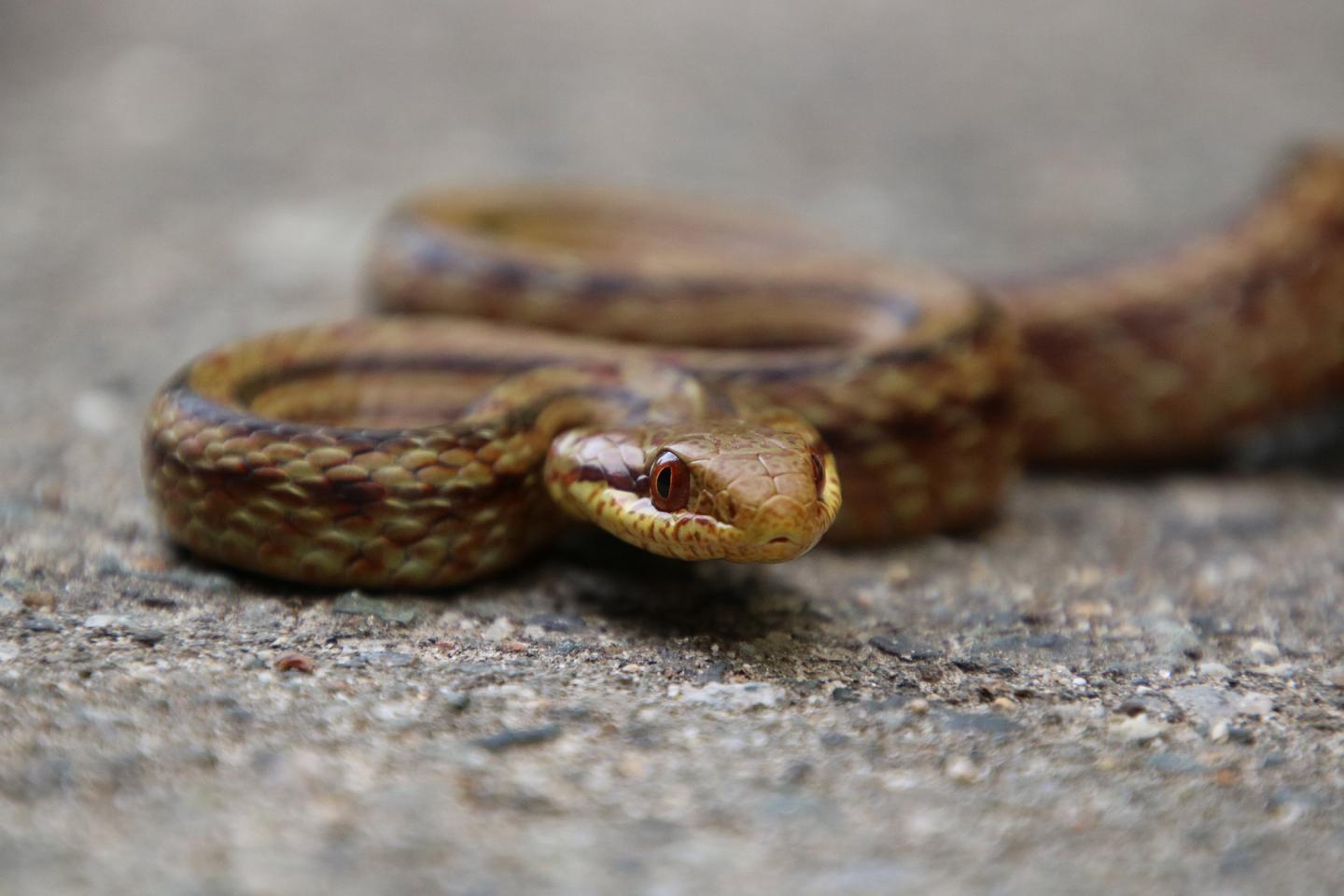The Independent's journalism is supported by our readers. When you purchase through links on our site, we may earn commission.
Armless fossils of tiny animal reveal how snakes may have lost their limbs
Fossil animal follows ‘forelimb-first’ mode of limb loss found in snakes, say scientists

Scientists have unearthed two 300-million-year-old fossils of a tiny animal that adapted to lose its forelimbs, shedding light on how vertebrates evolved a “snake-like body plan”.
Modern-day reptiles like snakes and worm lizards achieved diverse types of body plan through limb reduction and extreme elongation of their bodies, said researchers from the Smithsonian National Museum of Natural History in the US. Such body plans helped some of these early animals to adapt to different movement methods in different ecologies, developing degrees of swimming or arboreal lifestyles.
The team of scientists, led by Arjan Mann, found two fossils of the ancient animal in a large body of shale at Francis Creek in Illinois, US. The rock formations there are well known for preserving ancient animal remains in fine detail.
The new species, named Nagini mazonense and described on Sunday in the journal Nature Ecology and Evolution, exhibited extreme body elongation and corresponding limb reduction. Nagini may have grown to about 10cm (4in) long, with a snake-like body and no forelimbs, the scientists said.
“Our new study presents a description of a new fossil species of highly elongated, serpentine, recumbirostran known as Nagini mazonense from the world famous, Late Carboniferous-aged (309-307 Ma) Mazon Creek Lagerstätte of Illinois, US,” Dr Mann wrote in an article linked to the study on Tuesday.
Recumbirostra is a group of limbed vertebrates that lived during the Carboniferous period and the following 47 million years in the Permian era.
Nagini belongs to a specific subgroup of highly elongated recumbirostrans known as molgophids, some of which had around 100 vertebrae, said Dr Mann.
While previously unearthed molgophids showed signs of limb reduction, Nagini completely lacked the presence of a forelimb and pectoral girdle – the bony structure which supports the attachment of forelimbs.
The fossil, however, retained a well-developed hindlimb with four toes on each foot.
Researchers said the species may also have had a round snout, and a long body with about 85 vertebrae and ribs, based on impressions of soft tissue left in the fossil records.
While exactly how limbs are lost in reptiles is not fully understood, the new study suggested Nagini followed the “forelimb first” mode of limb loss found in snakes.
In this mode, researchers said, expression of the gene Tbx5 – known to play a key role in tissue and organs formation during embryonic development across several species – was altered, resulting in the “complete failure to establish a forelimb field during development”.
“The nail in the coffin here is really the lack of both a forelimb and, more importantly, the entire pectoral apparatus, which are controlled in part by the same genes,” Dr Mann wrote.
This forelimb-first limb reduction is consistent with the pattern seen in modern snakes, and contrasts with the process of hindlimb-first reduction found in many other four-limbed vertebrate groups, researchers pointed out.
“The discovery of an ancient snake-like fossil lacking forelimbs but retaining hindlimbs is a fantastic find, because it reveals the existence of transitional forms before complete limb loss during evolution,” Rolf Zeller from the University of Basel in Switzerland, who was not an author on the study, told New Scientist.
Subscribe to Independent Premium to bookmark this article
Want to bookmark your favourite articles and stories to read or reference later? Start your Independent Premium subscription today.

Join our commenting forum
Join thought-provoking conversations, follow other Independent readers and see their replies